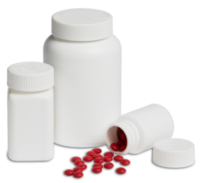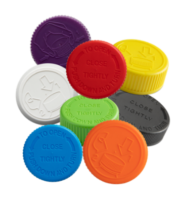Information economics has existed for decades and drives much of how products, including cannabis, are marketed and purchased. One of the essential frameworks that guides information economics are the search, experience, and credence properties of a product (Patterson, 2017). Understanding these different product attributes is key to setting up a sustaining cannabis product, corporation, and industry.
Search
The search attribute of a product is largely what we see prior to the purchase of a product. Images, claims, and packaging may all contribute to the search attribute of a product. You’ve got a good-looking, flower, pre-roll or edible, and it shows well on your insta page. Information is seemingly symmetrical between agency and consumer, what you see is what you get. In the developing cannabis industry, firms are investing a tremendous amount of resources into search attributes.
Experience
What is the effect of the product? There are two aspects of the experience attribute in information economics. Testimonials may be also considered experience attributes, as they give a user knowledge of how a product tastes, how long it takes to kick in, how long it lasts and descriptions of how others perceived the product’s deliverables. Despite testimonial power, experience is largely personal and occurs only after the product is consumed. Information is seemingly symmetrical; you get the experience that the agency planned and you anticipated. Advances in genetics, homogeneous production methods and potency testing demonstrate that the cannabis industry is investing in experience attributes.
A level playing field where transparency is at the forefront of all transactions will help solidify trust and drive sustainable growth. So, your product looks good, tastes good, and has very positive reviews. Customers can’t get enough; they are voting with their wallets for your product. But there is a third part of information economics you may be missing.
Credence
Credence attributes rely on information asymmetry. Think of used cars as a textbook example: sellers of used cars rely on asymmetry to motivate purchases. Highway miles, adult driven, oil changes every 3,000 miles, etc. are claims that can only be verified by the seller, the buyer has no way of knowing if these are true or not. Credence attributes can’t be verified by the seller due to lack of knowledge or expertise (Ford et al, 1988). The same goes for a consumable good like cannabis, only the grower or manufacturer knows what occurred in the “back of the house.” Product safety, therefore, is a credence attribute of cannabis products.
Investing in credence attributes in a young market may seem cost prohibitive. Many in the cannabis industry simply want to follow whatever the state they operate in dictates as the minimum allowable. In hemp we see states that require QR codes on each product that link to a COA, but many do not. Does the cost to produce the COA and QR code make a product more eye-catching or enhance the experiences? No, but those producing it may pay a hefty price if and when the product makes someone sick.
If a firm relies on fragmented, disparate regulatory bodies to dictate their investments in product safety, they will eventually face credence issues. Is smokable flower grown in Texas safer than that grown in Maine? We don’t have data to support either regulation’s effectiveness, so a firm or industry must dictate what the standard is and stick to it.
We need only look at the leafy green industry to see an example of a product that did not break any regulatory guidelines yet continued to sell a good with very negative credence attributes. How long were folks getting sick from leafy greens prior to them identifying the source? No one knows and that is what makes credence attributes so hard to pin down and develop an ROI formula for. Inputs that yield not-sick people aren’t known until someone gets sick. For leafy greens, they had an advantage – years of studies showing that they were good for you. Cannabis, unfortunately, doesn’t have that leg to stand on and faces an uphill battle gaining public trust.
As soccer moms (and dads) across the nation start to work cannabis into their play date wine sessions, the industry must ensure that they are investing in all avenues of information economics. A level playing field where transparency is at the forefront of all transactions will help solidify trust and drive sustainable growth.
References
Patterson, M. (2017). The economics of information. In Antitrust Law in the New Economy (pp. 39-60). Cambridge, Massachusetts; London, England: Harvard University Press. Retrieved February 7, 2020, from www.jstor.org/stable/j.ctvc2rkm6.6
Ford, G., Smith, D., and Swasy, J. (1988), An Empirical Test of the Search, Experience and Credence Attributes Framework, in NA – Advances in Consumer Research Volume 15, eds. Micheal J. Houston, Provo, UT : Association for Consumer Research, Pages: 239-244.








